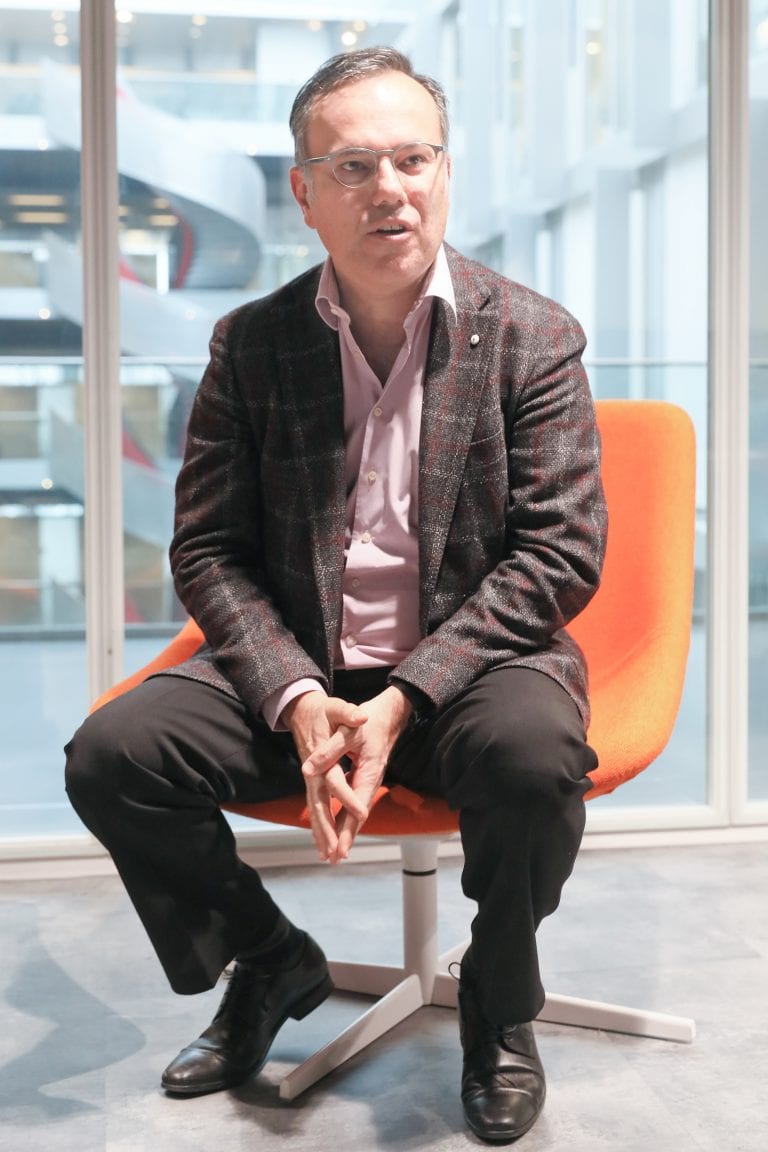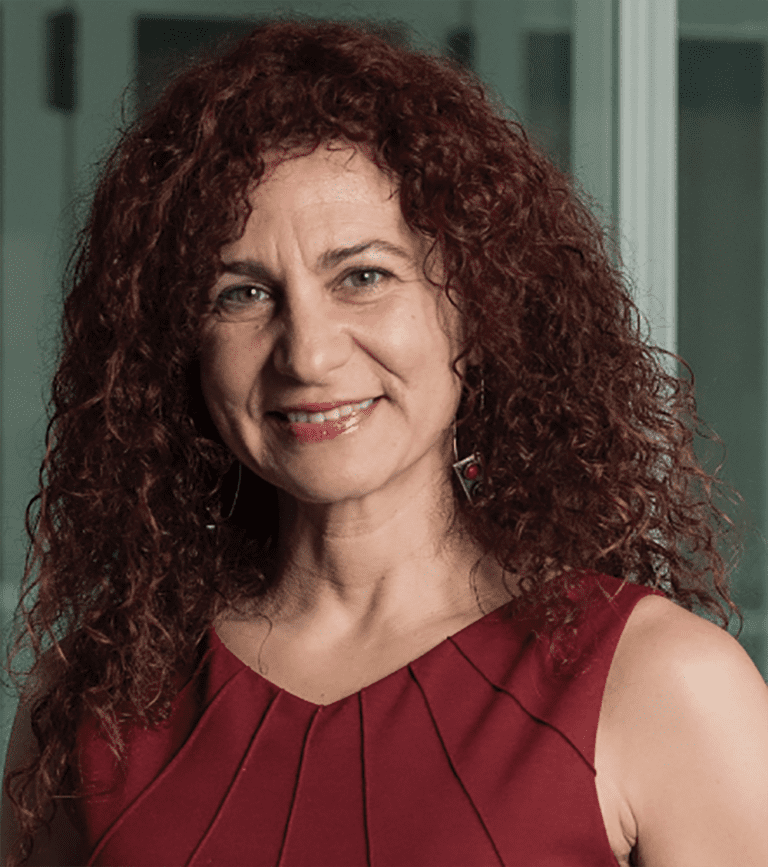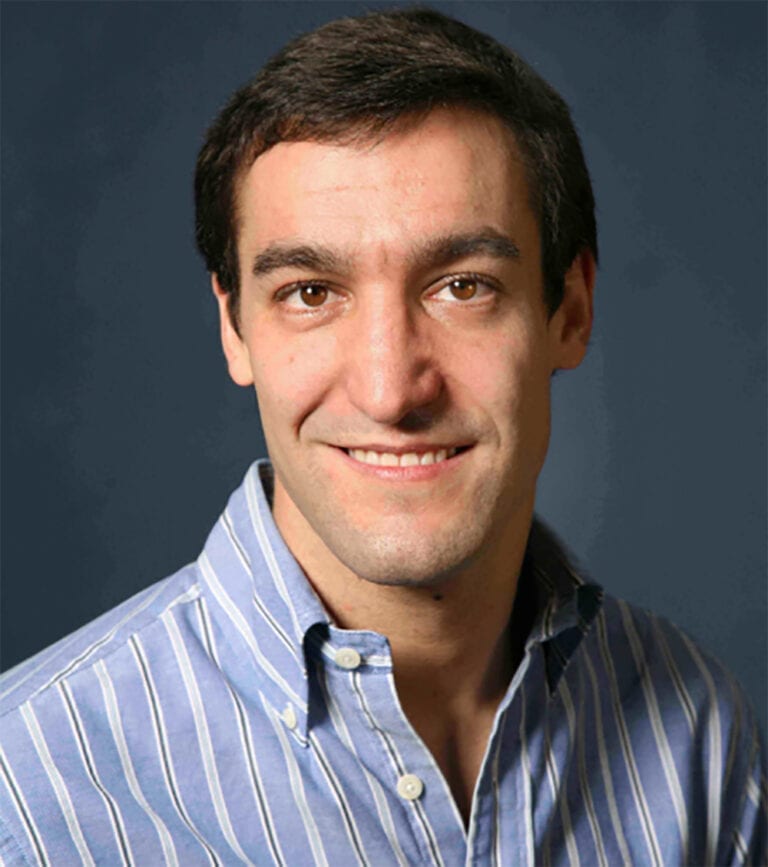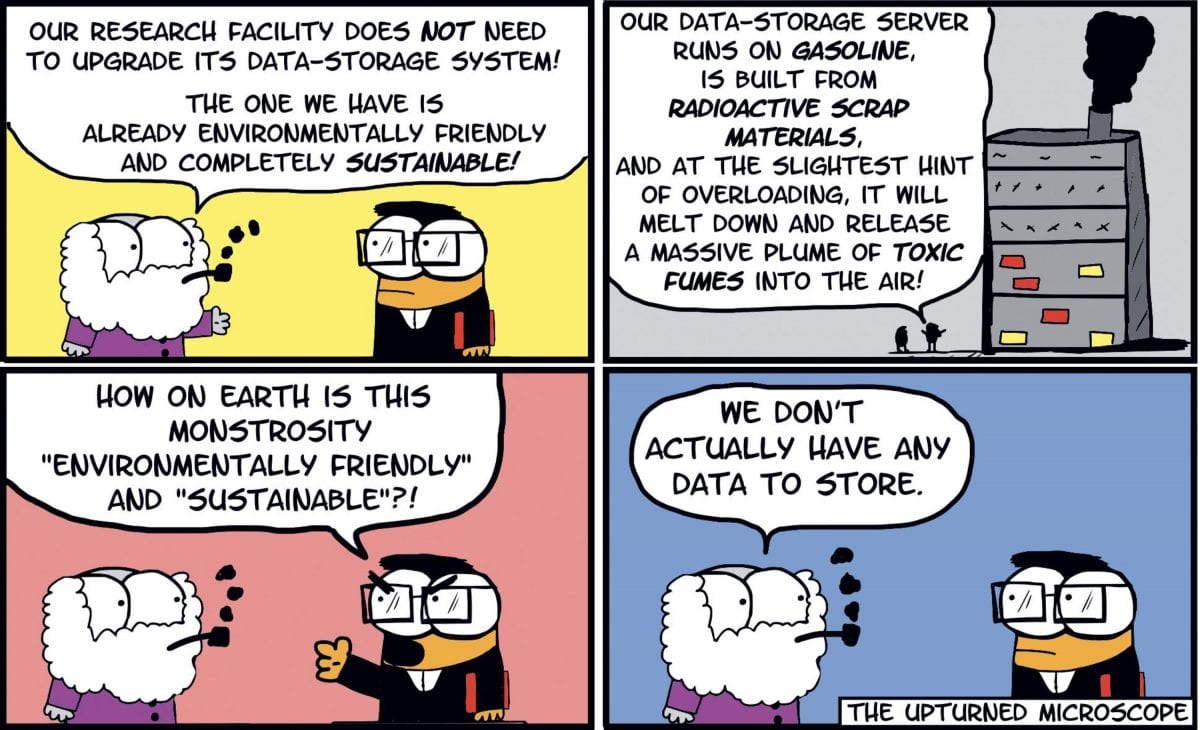For reasons you can imagine, much of what we used to do in the physical world is now being done virtually. That’s having an effect on energy-related pollution – CO2 emissions from manufacturing and transportation have fallen drastically, for example. But there has been a concomitant increase in energy use for digital services. Exact numbers aren’t yet available, but according to Babak Falsafi, the director of EPFL’s EcoCloud center, the trend is clear. “Behind every digital service we use lies a data center. And we’re heading towards a world where everything is done digitally, across all markets and industries.”
Falsafi continues: “A lot of business activities have been shifted online because of the pandemic, causing a huge surge in demand, mainly for video. Non-work-related demand for streaming has also exploded. What’s more, today’s ultra-high-resolution screens use up a lot of energy. People don’t understand everything that’s involved in watching a movie in 8k – a lot of power is needed for all that data processing and transfer. You put that all together and it’s huge!”
- New certification system encourages greener data centers
- Using mathematics to manage big data
- Servers designed to work like humans
- EPFL gets a new data center
Relentless rise in demand
The current situation is set to last for a while longer: it’ll be weeks, or probably months, before a vaccine is ready – and that’s without factoring in a second wave. Many organizations, including schools and universities, have announced that they will keep holding classes online, at least partly. But the issue of data-center-related emissions was already a pressing one before the pandemic. “New technology like the internet of things, artificial intelligence, 5G and 4k televisions – which are now going to 8k – has pumped up demand, and therefore energy use,” says Falsafi. According to an article appearing in MIT Technology Review last year, training a single Transformer artificial intelligence model can generate as much carbon emissions as five American cars throughout their useful life. In another example, Netflix announced that its electricity use jumped 84% in 2019 to 451,000 megawatt-hours, or enough to power 40,000 homes in the United States for a year.
Some studies predict that digital technology will account for 8% of global electricity use by 2030 – up from 3–5% today – and 4% of CO2 emissions. This includes data centers, those huge buildings that house the servers we use to store, process, analyze and transfer data on the cloud (the biggest data centers already consume hundreds of megawatts). It also includes, in an equal measure, the telecommunication systems that transport those data. Consumer electronics and the energy used to build computing facilities also play a role, albeit smaller.
We’re heading towards a world where everything is done digitally.
The end of Moore’s law
While demand is skyrocketing, supply is bumping up against a ceiling. Moore’s law, which states that the number of transistors contained on a silicon chip doubles every year, has pretty much expired. We can’t keep packing more computing power onto chips like we’ve been doing over the past 50 years. The two options currently available are to build new data centers or expand existing ones. The data-center construction market is expected to swell to 57 billion dollars over the next five years.
Who’s responsible for keeping a lid on digital-related emissions? “Nobody!” replies Falsafi. “Nobody is being held accountable for those emissions. We pay telecom operators for our internet connections, for example, but the services we use on the internet – like Google and Facebook – are free. And those service providers aim to collect as much data about us as possible to improve their services. At no point in this arrangement are carbon emissions taken into account, since power use is measured at data centers and not on telecom networks.” Edouard Bugnion, EPFL’s Vice President for Information Systems, adds: “Data centers are basically technological advancement wrapped up in a consumable format. They are the vector by which cyberspace can develop. Google wouldn’t exist without data centers. Neither would much of the research conducted at EPFL.”
Towards more sustainable data centers
Engineers at EPFL’s EcoCloud have been working since 2011 to find a way around the supply ceiling. Their approach involves not only making data centers more efficient, but also reducing their carbon footprint. Nobody cared much about this latter aspect when the centers were first being built – but times have changed. “There are three things that need to be factored into the equation. First, the energy efficiency of data centers, which needs to be improved. Second, the CO2 that’s emitted to run them, which can be reduced by switching to renewable energy. And third, the energy the servers give off in the form of heat – can’t we do more with that heat than open a window and warm up the parking lot?” says Bugnion.
EcoCloud, along with the other members of the Swiss Datacenter Efficiency Association (SDEA), introduced an energy-efficiency certification system in early 2020. Their program – called the SDEA Label (see “New certification system encourages greener data centers“) – quantifies how much CO2 per kWh data centers emit, with the goal of encouraging operators to use renewable energy. EcoCloud also scouts opportunities for EPFL labs to work with businesses to develop advanced systems for cooling, energy management, energy storage and power generation – all within a local innovation ecosystem designed to help data center operators shrink their carbon footprint.

Edouard Bugnion and Babak Falsafi © Alain Herzog / EPFL
“When we created EcoCloud in 2011,” says director Babak Falsafi, “the goal was to cut data centers’ energy use and CO2 emissions – at the time, IT industry heavyweights cared only about the financial and business aspects. We developed pioneering technology that brought renewable energy into the data center ecosystem.” His research center aims to spur innovation across the ICT sector – from algorithms to infrastructure – to help meet today’s major challenges.
And data centers will play a growing role in those challenges as people rely more and more on digital technology. The amount of power consumed by data centers is set to expand rapidly, and by 2030 could account for 8% of global electricity use.
Making data centers carbon-free
To help keep that electricity use in check, a consortium of Swiss tech-industry organizations created the Swiss Datacenter Efficiency Association (SDEA). The initiative was spearheaded by digitalswitzerland and Hewlett Packard Enterprise (HPE); members include EcoCloud, HPE, Green IT Switzerland, the Luzern University of Applied Sciences and Arts (HSLU), the Swiss datacenter association (Vigiswiss) and the Swiss telecom industry association (ASUT). The initiative is also being supported by the Swiss Federal Office of Energy (SFOE) through its SwissEnergy program.
In January, the SDEA introduced a green certification system specifically for data centers. The system involves calculating data centers’ carbon footprint based on the energy efficiency of the building and IT equipment, as well as the IT equipment’s power load. “Until now, there was no way to measure data centers’ impact on CO2 emissions,” says Falsafi. “Our certification system is unique because it also factors in the source of the power used and how well heat is recovered. Everything is connected – if a data center uses renewable energy, its performance improves.”
The SDEA uses three certification levels (bronze, silver and gold) to encourage data center operators to cut their power consumption. Pilot tests at ten sites in Switzerland show that the SDEA’s “toolkit” effectively takes into account their efforts to shift in full or in part to renewable energy.
Until now, there was no way to measure data centers’ impact on CO2 emissions.
Arriving at just the right time
Since computer processors are reaching their maximum physical capacity, the only solution for managing the surging amount of data is to build more data centers. “Our certification system comes at just the right time,” says Falsafi. “We hope that it will encourage data center operators to build facilities that run on renewable energy, and stimulate innovation and investment in this field.”
“Sustainability means coming up with solutions for problems as efficiently as possible while using fewer resources,” says Anastasia Ailamaki, a professor at EPFL’s Data Intensive Applications & Systems Laboratory (DIAS) and founder of local startup RAW Labs SA. “And so we can say that our research is directly related to sustainability.” The engineers at DIAS are developing a data management system that makes as much use as possible of an organization’s existing hardware and software – a real challenge given the wide variety of hardware and software out there.
“Hardware that’s turned on but not used is a waste of energy,” says Ailamaki. In the same way that our bodies burn calories even when we’re just sitting there, computers burn up a considerable amount energy even when they’re idling. “Most computers are used to only 20% of their potential. It’s like if you filled up your fridge with food, let it sit there until it goes bad, and then complained that you don’t have anything to eat,” says Ailamaki. The same holds true for software. She explains: “Today most people use only 10% of the data they store. But before data can be stored, they have to be saved onto a server and standardized – and you generally need to know what you want to do with them afterwards.” She offers this example: “Suppose you have a series of interviews saved in different Word files, along with an Excel file listing all the companies that invest in EPFL startups. Imagine you wanted to search all the files and find the names of people who mention sustainability in their interview and who have invested in an EPFL startup. You couldn’t do it. The data would have to be stored in a database for that kind of query. And because the data are stored in two different formats – text and table – you’d have to standardize them before you could save them in the database.”
Ordering data à la carte
Ailamaki’s approach involves formatting the data even before this process begins. “Instead of standardizing the data, our system recognizes what kind they are and gives them a mathematical format based on how they will be searched. Then when it comes time to search the data, our program generates the exact code needed to execute the query – one query at a time,” she says. However, one potential drawback to this approach is that it’s significantly slower than conventional methods where data are already saved in a database and searches are done directly. But Ailamaki’s team found a solution for that, too. “Our system uses artificial intelligence and machine learning to remember the kinds of queries performed. It stores all the work done previously – much like a cache that lets programs respond much more quickly to queries of the same dataset,” she says.
The system, with its just-in-time approach, allows users to search any type of data in any way, combine data from any source and create a cache of the most frequently used data. It’s similar to ordering à la carte. And the system can be used with any kind of data, hardware or application since it doesn’t rely on code, but mathematics. RAW Labs used this approach to develop its RAW technology for combining different types of data on the fly and generating important information in a ready-to-use format for both businesses and consumers.
When it comes to hardware, the DIAS engineers are taking the same approach. Their just-in-time code-generation method can develop a program for mapping out hardware’s properties on the fly and helping organizations run their IT equipment more efficiently. “With our system, organizations can use their computers at up to 80% of their potential,” says Ailamaki.
Our system uses artificial intelligence and machine learning to remember the kinds of queries performed.
EPFL’s Embedded Systems Laboratory (ESL) is studying two major energy-related problems with servers. The first is that they aren’t being used anywhere near their maximum capacity. Actual use is closer to 60%, according to ESL head David Atienza. “Servers are designed for tasks that require a lot of processing power – such as running neural networks – but they’re being used mainly for watching movies or sending pictures via chat,” he says. As a result, they overheat. “It’s like driving a Ferrari at 40 km/h – it would burn up a lot more energy at that speed than a Twingo would,” he adds.
The problem is that even if the servers are the only equipment that overheats in a data center, operators still have to cool the whole center. To help find a solution, Atienza is working on the Compusapien research project, for which he received an ERC Consolidator Grant in 2016. His team found that cooling servers locally can cut a data center’s power requirement by 40%. They worked with engineers from IBM to develop a system where cooling water is used to lower the temperature of individual servers, as opposed to running fans to cool the entire room. With this system, heat is recovered in the cooling water and reused. The water runs through microfluidic channels that are just 50–100 µm high and sandwiched between two layers on a cooling plate. As the water absorbs heat from the servers, it transfers it to microfluidic fuel cells where it’s converted into electricity. The electricity can then be fed back to the servers as power, reducing the amount of power that the data center draws from the grid.

Processing data locally
“The human brain works the same way. Blood carries nutrients to the brain and cools it. It’s just that with servers, the process is a little more complicated!” says Atienza. While a lot of data centers already use cooling water, his is the first system to use microfluidic fuel cells to recover heat and turn it into electricity. The technology – nicknamed “electronic blood” – was tested in a 3D prototype developed in association with IBM, and proved to be feasible from a technical point of view. Now ESL engineers are building a 3D version of the integrated system and plan to develop a full server through a joint project with another company.
The second component of Atienza’s approach is to process data as locally as possible since transmitting them takes up a lot of energy. One example of this approach is a next-generation Nespresso machine that the ESL team developed. Their machine uses an embedded artificial intelligence system to manage maintenance and restocking completely on its own. “More and more applications – especially those for smartphones – operate locally and don’t go through data centers,” says Atienza. “That’s a lot like the human body. Our bodies have lots of tiny modules that can carry out two or three simple functions; the brain gets involved only when important decisions need to be made. That’s a lot more efficient than today’s data centers where everything runs all the time.”
The high-density center, which will eventually have 3 megawatts of capacity, will be used to store, manage and process data collected by EPFL scientists during their lab experiments. Its sides and roof will be covered entirely in solar panels, and the heat generated by its servers will be recovered and used in the new power station. It’s scheduled to go into service in the second half of 2021.





